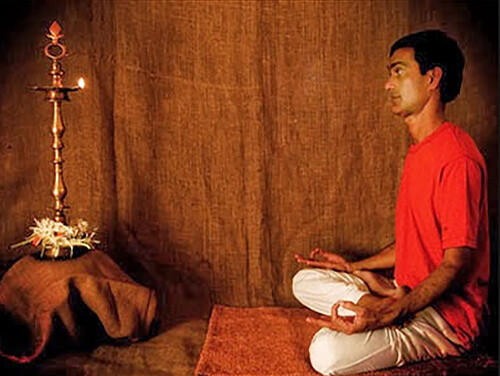TRATAKA
“Trataka” in Sanskrit means “continuous contemplation”, which reveals the essence of the technique itself. One can contemplate both an external object (1) and an internal one (2). There is also a technique that involves the transition from the contemplation of an external object to the contemplation of its internal image (3). More: https://www.julianalucky.com/yoga-for-kids.
(1) When contemplating a real object with open eyes, one should not blink. That is, it is necessary to concentrate to such an extent on the perception of the outlines, shape, structure of the object in order to forget about the natural need of the body to blink! Your task during concentration is to turn off the body and mind, get rid of their obsessive participation in your subtle, intuitive work of penetrating deep into your consciousness.
There are two approaches to performing external Trataka – through volitional effort and through relaxation. If you make excessive efforts not to blink, experience a state of discomfort, which is expressed in burning, dry eyes and, as a result, tears flow, you are performing a cleansing technique that helps to get rid of emotional tension and toxins accumulated inside. If you try not to blink due to the total relaxation of the retina, a high degree of awareness and all-consuming attention, you perform concentration (practice Dharana) and thereby tune in to meditation.
(2) When contemplating an imaginary object, it is also important not to take your eyes off it and not get lost in the perception (more precisely, reproduction) of its outlines, shape and structure, which is quite difficult to do: the object constantly slips away, dissolves, disappears from the zone of attention. We are so intellectually developed that our ability to think creatively (the ability to visualize and hold images in our minds) often suffers greatly, and this technique is most difficult for people with pragmatic thinking.
(3) It is also possible to contemplate a real object for a while, and then close your eyes and continue to contemplate its image in your mind. While the first technique is best for beginners, this variation is a preparation for deeper concentration—the contemplation of an inner object.
Examples of objects for contemplation:
candle flame,
cross,
OM sign,
Lotus flower,
black dot on white background,
rising Sun,
moon,
star,
crystal,
mandala,
deity image,
reflection of your eyes in the mirror, etc.
Remember that the chosen object should not only impress you, but evoke strong feelings, enchant you, hypnotize – in this case it will be easier for you to focus on it and get used to it so that in the future only when you see it or remember it, you you can quickly enter into a state of meditation.
